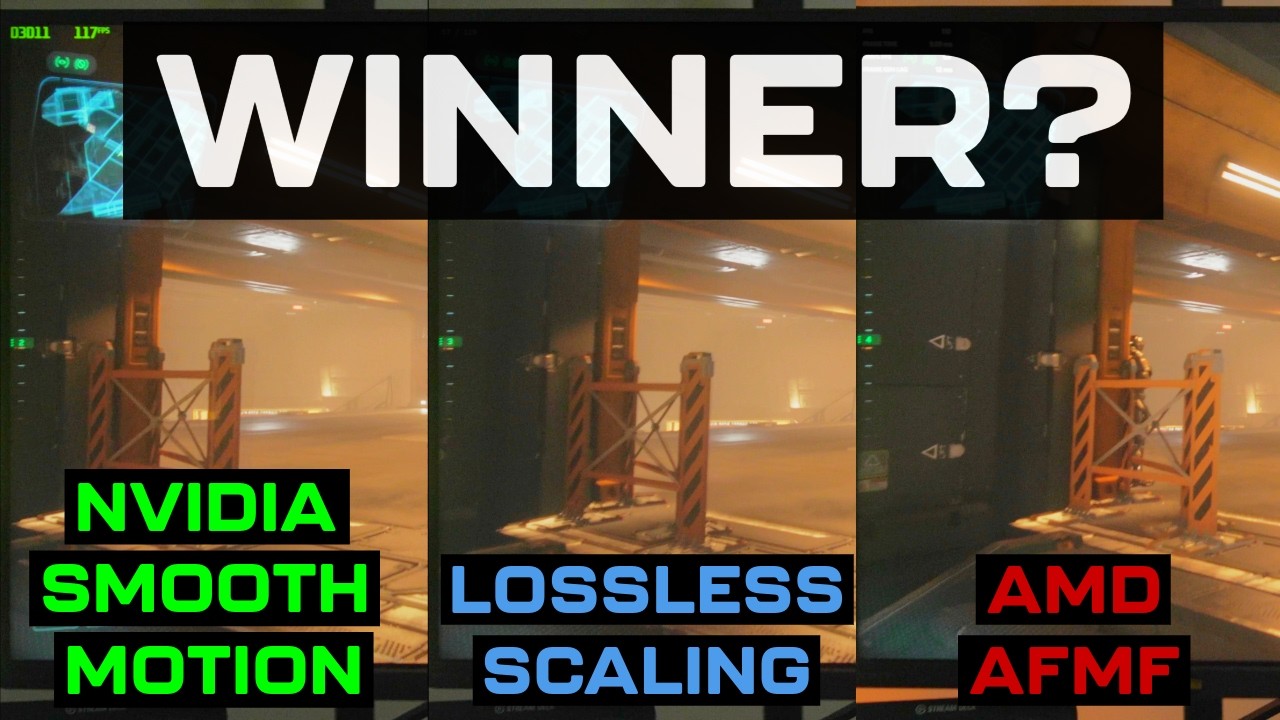The video evaluates three frame generation technologies for Star Citizen—Nvidia’s Smooth Motion, AMD’s Fluid Motion Frames, and the independent Loss of Scaling—based on image quality, latency, ease of use, and availability. While Nvidia excels in image quality, its setup difficulties and high latency issues lead to Loss of Scaling and AMD’s AFMF being more viable options overall, tying for the best performance.
In the video, the presenter evaluates three frame generation technologies for enhancing performance in Star Citizen: Nvidia’s Smooth Motion, AMD’s Fluid Motion Frames (AFMF), and an independent program called Loss of Scaling. Each technology is assessed based on four criteria: image quality, latency, ease of use, and availability. The goal is to provide viewers with a clear understanding of the strengths and weaknesses of each option, helping them decide which frame generation tech is best for their gaming experience.
When it comes to image quality, Nvidia’s Smooth Motion is found to deliver the best overall performance, with decent visuals despite some flickering issues. Loss of Scaling follows closely behind, also providing good image quality, while AMD’s AFMF shows more flickering and artifacting. The presenter conducts side-by-side comparisons at reduced speeds, revealing that Nvidia’s technology handles UI elements and motion better than the others, leading to a scoring of three points for Nvidia, two for Loss of Scaling, and one for AMD.
Latency testing reveals that Nvidia’s solutions struggle, particularly when frame rates are capped, resulting in high latency. While AMD’s AFMF performs reasonably well, it still has some latency increases with frame generation. Loss of Scaling shows a mixed performance, with some improvements when used with Nvidia’s system, but it also increases latency under certain conditions. The presenter assigns points based on these findings, giving Loss of Scaling 1.5 points, Nvidia 1 point, and AMD’s AFMF 2 points for latency performance.
In terms of ease of use, Nvidia’s Smooth Motion faces criticism for being difficult to set up, with frequent crashes and driver issues reported. Loss of Scaling offers adaptive frame generation, which simplifies the process but requires the game to be in windowed mode. AMD’s AFMF is straightforward to activate but also requires frame rate capping. The scoring reflects these challenges, with Nvidia receiving zero points for ease of use, Loss of Scaling earning two points, and AMD’s AFMF also receiving two points.
Finally, the presenter discusses availability, noting that Nvidia’s Smooth Motion is limited to the 50 series cards, which is seen as a disadvantage. Loss of Scaling, while not free, is compatible with a wide range of GPUs, earning it two and a half points. AMD’s AFMF supports several generations of cards and is free, thus receiving the full three points. In total, Loss of Scaling and AMD’s AFMF tie with eight points, while Nvidia scores five and a half. The conclusion emphasizes that while Nvidia offers superior image quality, its issues detract from its overall viability, making Loss of Scaling a compelling option for gamers looking for effective frame generation technology.
